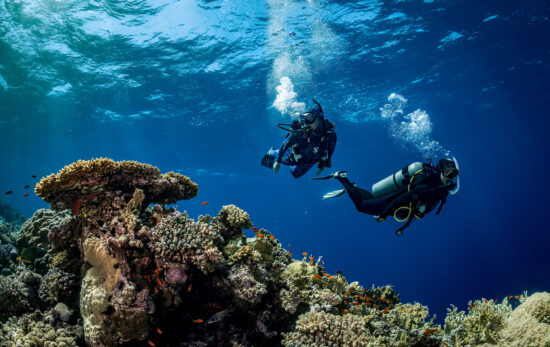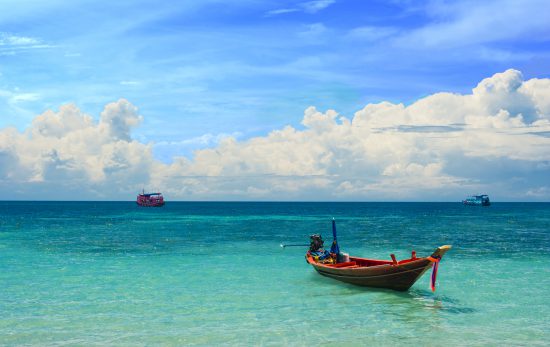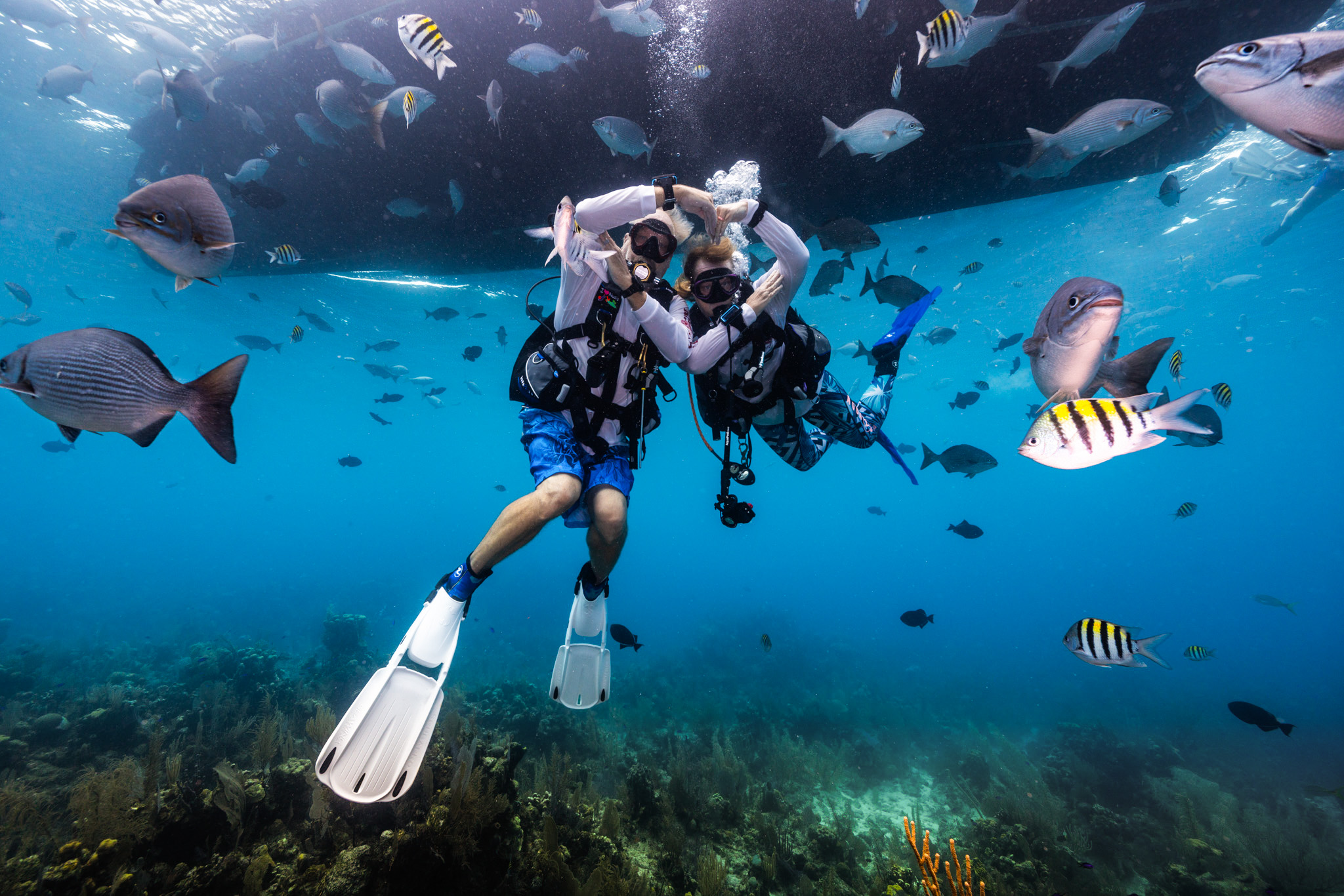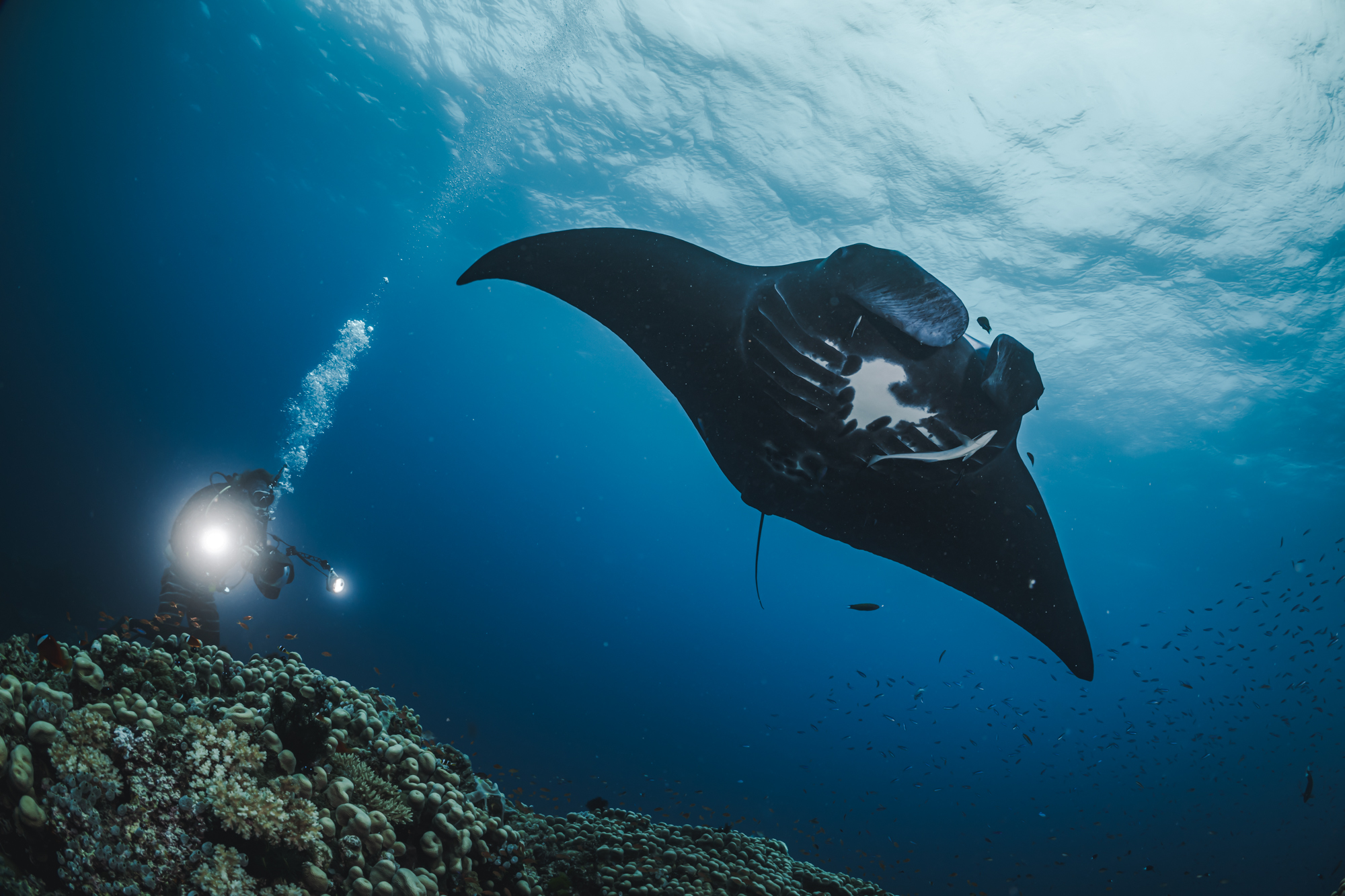The PADI Travel team is comprised of experienced divers and PADI Pros who have explored more than 60 dive destinations worldwide. They excel at assisting divers and travelers in finding dive sites that align with their skill level, budget and expectations. In this article, we have compiled 10 dive travel destinations (plus a bonus!) from the PADI Travel Experts that will help you discover your next diving adventure. Get ready for an extraordinary underwater journey with their expert guidance!
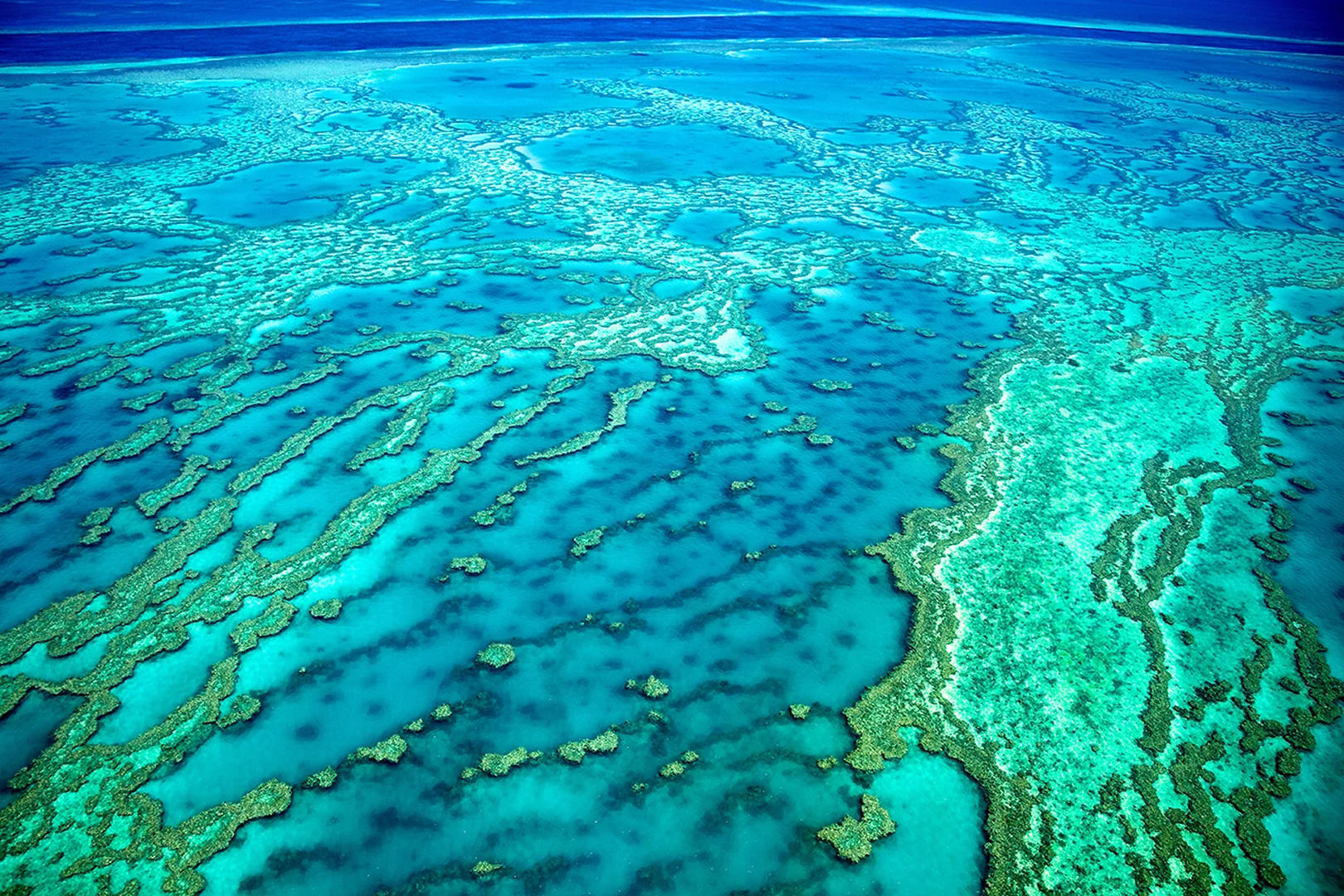
1. Australia – Queensland
With its nearly 3000 km (1864 miles) of reef, Queensland, Australia presents an underwater world teeming with vibrant marine life. Divers can explore a medley of kaleidoscopic reefs, caves and shipwrecks. Beyond the famed Great Barrier Reef, southern Cairns boasts rugged underwater landscapes, where lucky adventurers experience close encounters with swooping eagle and manta rays, octopus, reef sharks, hammerhead sharks and dogtooth tuna.
If you are interested in wrecks, Tom Paris, PADI Travel’s Senior Product Manager, recommends the wreck of the Yongala, which lies within the central section of the Great Barrier Reef Marine Park. He says, “Yongala is a shipwreck off the coast of Ayr, Queensland. Sunk over 100 years ago in a hurricane, it rests on the mudflats between the reef and the coast at a depth of 25-30 meters (82-100 feet). Its unique position creates strong currents, but the shipwreck has transformed into an artificial reef and cleaning station for marine life. During my dive, I saw six marble rays gracefully gliding in the current, a surprise visit from a bull shark swimming up from behind me, a shovel nose ray, turtles peacefully grazing in the coral gardens on top of the wreck, and grey nurse sharks taking a nap inside. It was truly epic!”
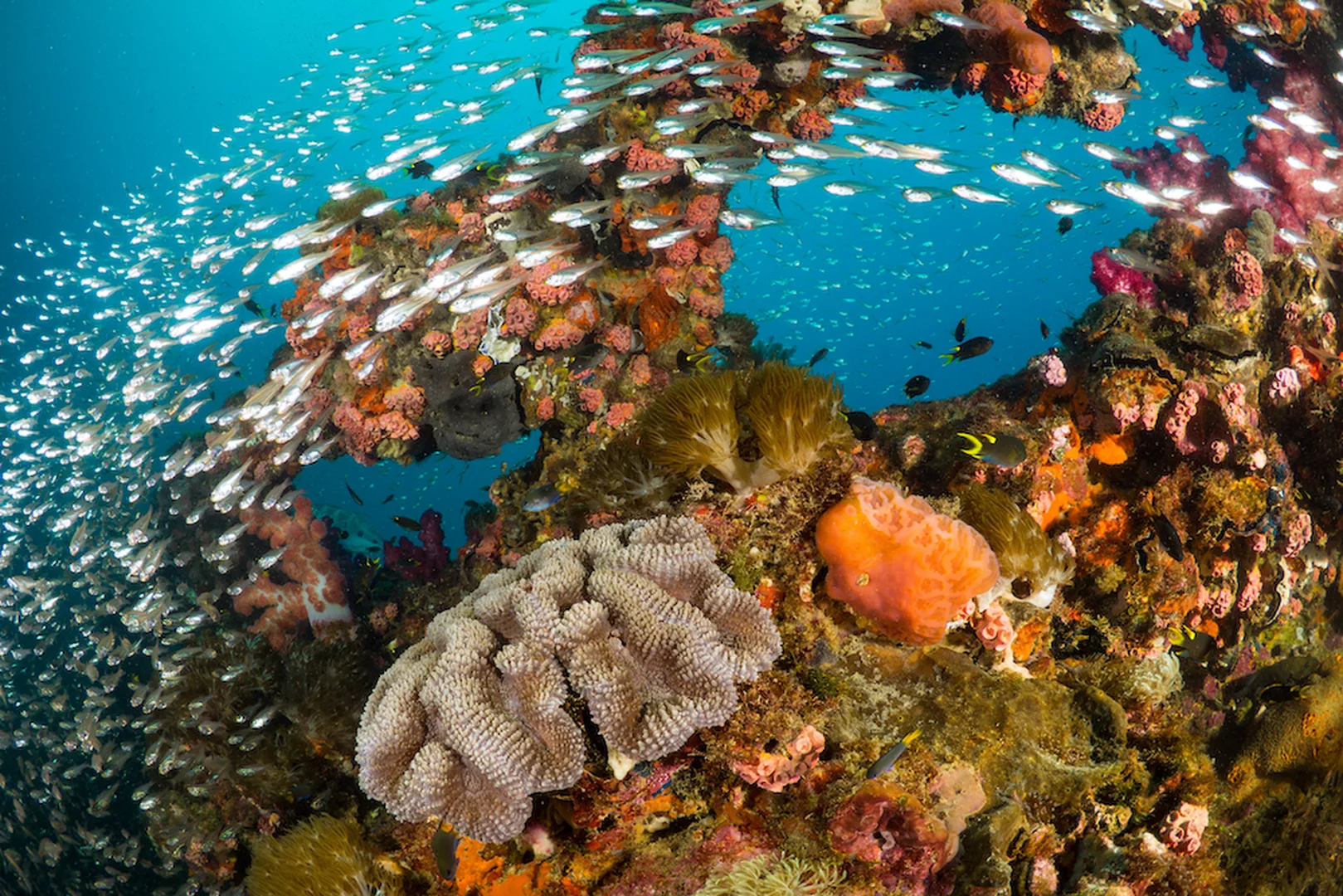
Queensland offers year-round diving with temperatures ranging from 71- 87°F (22-29°C). Visiting between June and November provides spectacular visibility and high chances of spotting rays, sharks, and dwarf minke whales. From October to April, divers can witness manta rays feeding on plankton and spot leopard sharks, sea turtles, dolphins, and many tropical fish. Additionally, the period from July to November offers the unique opportunity to witness migrating humpback whales.
2. Caribbean – Bonaire
Bonaire, a Dutch Caribbean island, is situated just north of Venezuela in the southern Caribbean. Celebrated for over 35 years of marine conservation, this destination is home to astonishing biodiversity, boasting more than 470 fish species. Bonaire is a premier shore diving location with vibrant coral reefs and extensive varieties of sea life. The island’s dive sites are uniquely free from currents, making it an excellent location for gaining new diving certifications. Visitors can opt for boat or shore diving, with many resorts providing easy access to breathtaking offshore reefs. Those keen to explore the distant reaches of Bonaire National Marine Park may prefer booking dives from the local dive boats.
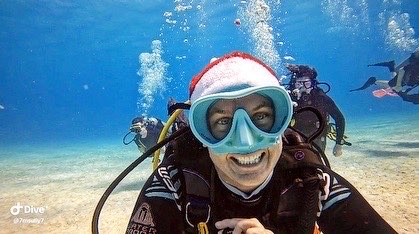
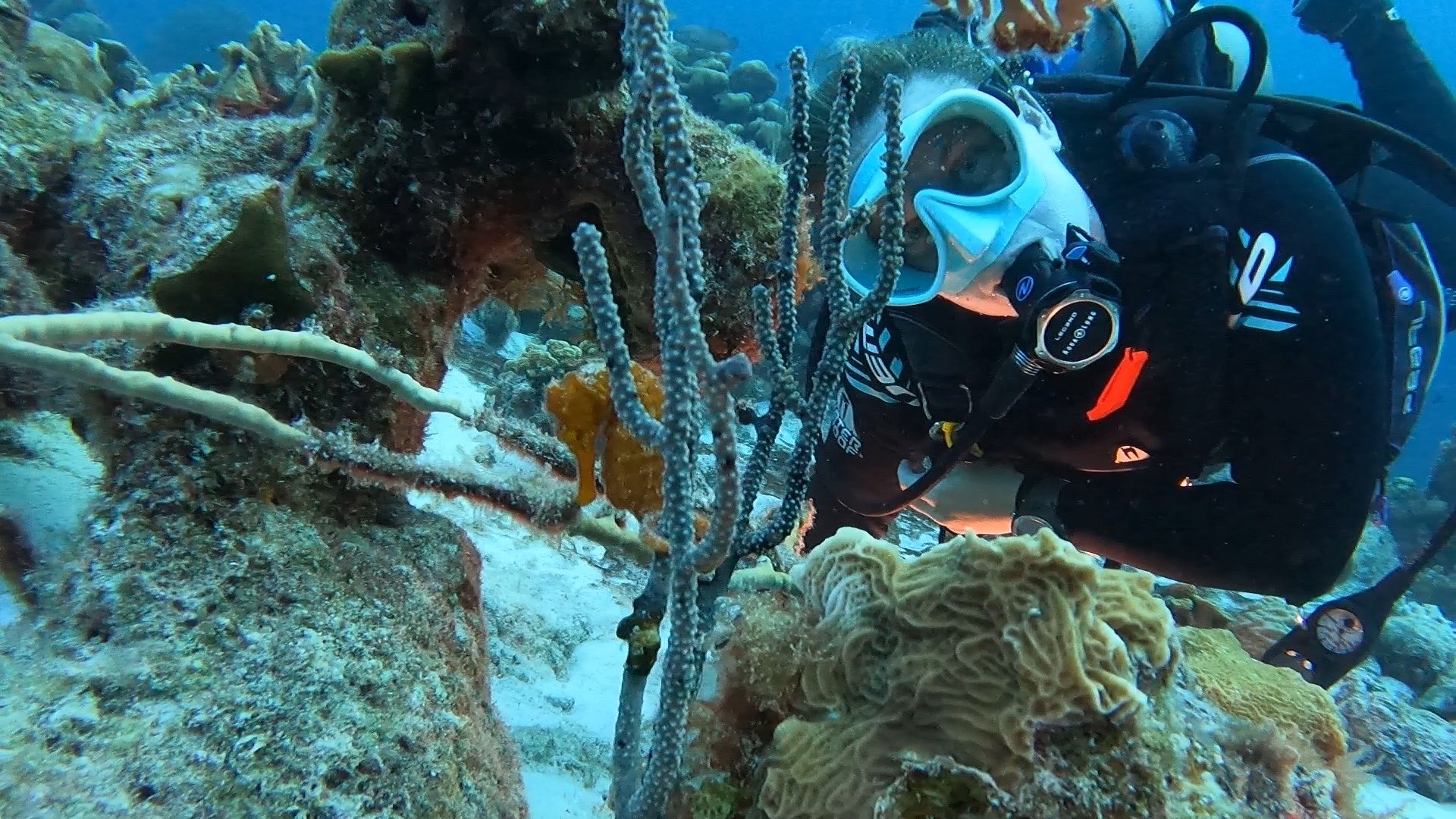
“Consistently ranked as one of the world’s top dive destinations, Bonaire is a little-known diver’s paradise. As an Instructor who worked in Bonaire in 2022, I enjoyed sharing its beauty with my customers. With crystal clear Caribbean waters ranging from 80-85°F (26-29°C), you can spot green and hawksbill turtles, a variety of eels, spotted eagle rays, long-snout seahorses, colorful reef fish in the hundreds, and pods of dolphins! Salt Pier, one of the top shore dive sites globally, showcases a diverse range of fish and sea creatures. With over 100 dive sites accessible from the beach, Bonaire offers an incredible diving experience. Aruba and Curacao are great, but don’t miss the chance to dive in beautiful Bonaire!” says Michelle Sullivan, PADI Travel Expert.
The dry season, from April to November, provides optimal weather conditions with negligible rainfall, steady and calm sea conditions, and temperatures hovering around 84°F (29°C) in the sea and 89°F (31°C) in the air. This period is ideal for those who enjoy both beach and dive time. Regardless of the season, Bonaire promises an exceptional diving experience throughout the year due to its consistent marine life.
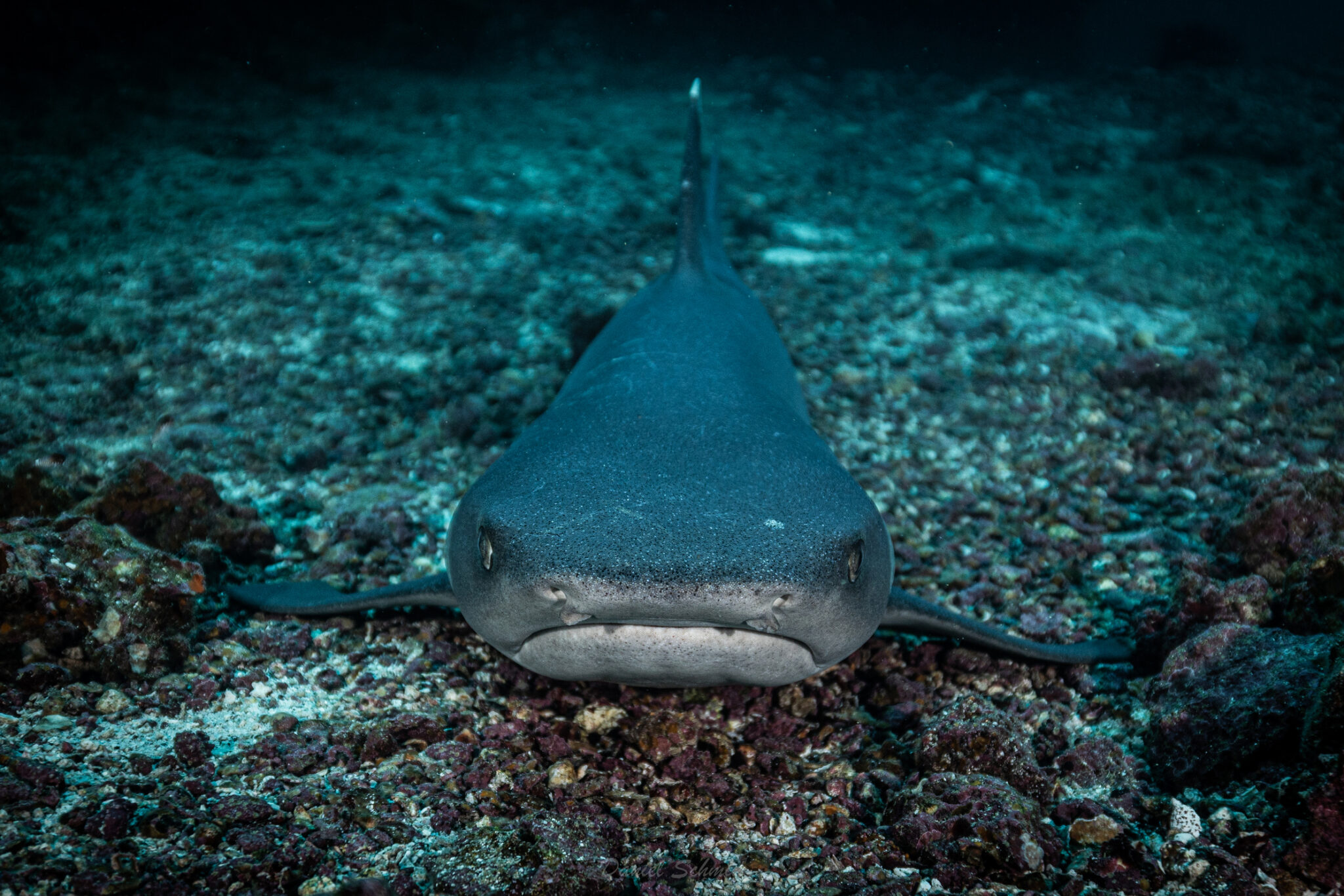
3. Costa Rica – Cocos Island
A jewel in the heart of Costa Rica, Cocos Island offers an unparalleled diving experience. To explore this island’s rich underwater life, one must take an 8 to 10-day diving liveaboard journey from the port city of Puntarenas. Reaching Cocos Island may take up to 36 hours, but the journey is worth every minute. Due to the island’s strong currents and surges, it’s a destination suitable for advanced divers. The dive sites, comprised of boulders, pinnacles, and seamounts, are a thrill to explore.
“I was lucky enough to visit Cocos Island in November 2022, and I can confidently say it was the best trip I have ever been on,” says Alexandra Engeler, PADI Travel Expert. “The Okeanos Aggressor liveaboard effortlessly cuts through the 540 nautical miles (1000km) off the coast of Costa Rica, providing an epic diving experience with pristine and unspoiled reefs. The underwater environment in Cocos Island remains remarkably undisturbed and well-preserved due to its remote location and limited human impact. Only one boat of divers is allowed on each dive site, creating a personal wonderland teeming with large pelagic species, like hammerhead sharks, tiger sharks, and manta rays. Every dive takes your breath away, with strong currents transforming drift dives into mesmerizing encounters with a conveyor belt of ocean critters. Reef hooks allow you to savor the vastness of each site, while amazing macro life inhabits every crevice. I cannot recommend this dive destination highly enough. It’s an experience that leaves you speechless and wanting to share it with everyone!“
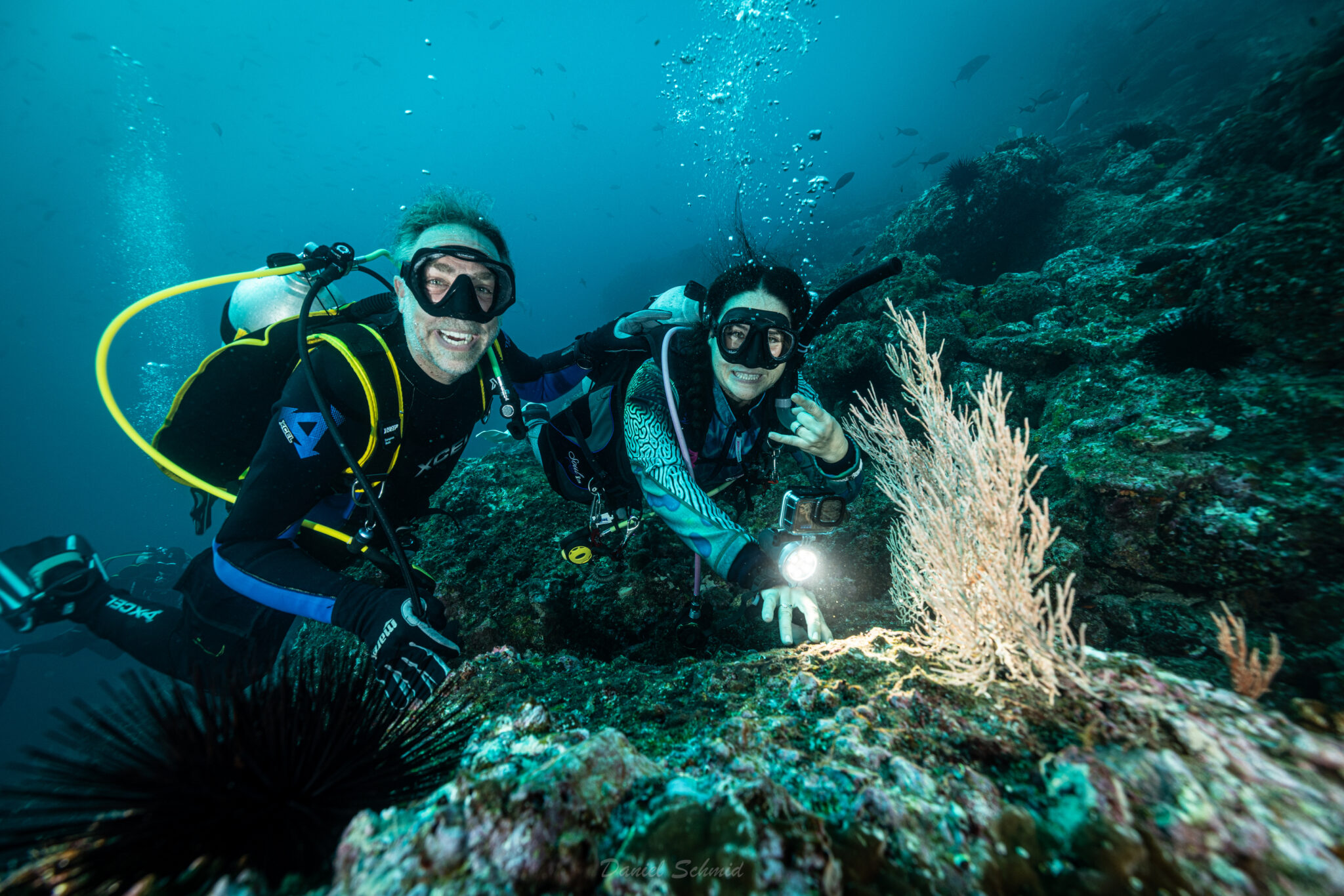
With water temperatures ranging from 75-84°F (24-29°C) throughout the year, you can enjoy diving any time. However, the dry season from December to May is optimal, even though rain is still expected. The visibility is at its finest during these months. If you’re keen on encountering manta rays and whale sharks, plan your visit between June and November.
4. Ecuador – Galapagos Islands
Venturing to Ecuador, the Galapagos Islands offers an unparalleled diving experience, boasting a dazzling array of marine life and exceptional visibility. Dive sites are scattered across the islands, with noteworthy spots on Darwin Island, Isabela Island, Santa Cruz Island and Roca Redonda. Darwin Island is famed for its unique creatures and geological formations, while Isabela Island allows swimming alongside playful sea lions and penguins. The underwater volcano at Roca Redonda is a haven for sharks, and the flamingo lagoon and mangrove forest on Santa Cruz Island add to its charm. Not to be missed is Gordon Rocks, one of the best dive sites in the central islands on the east coast of Santa Cruz Island.
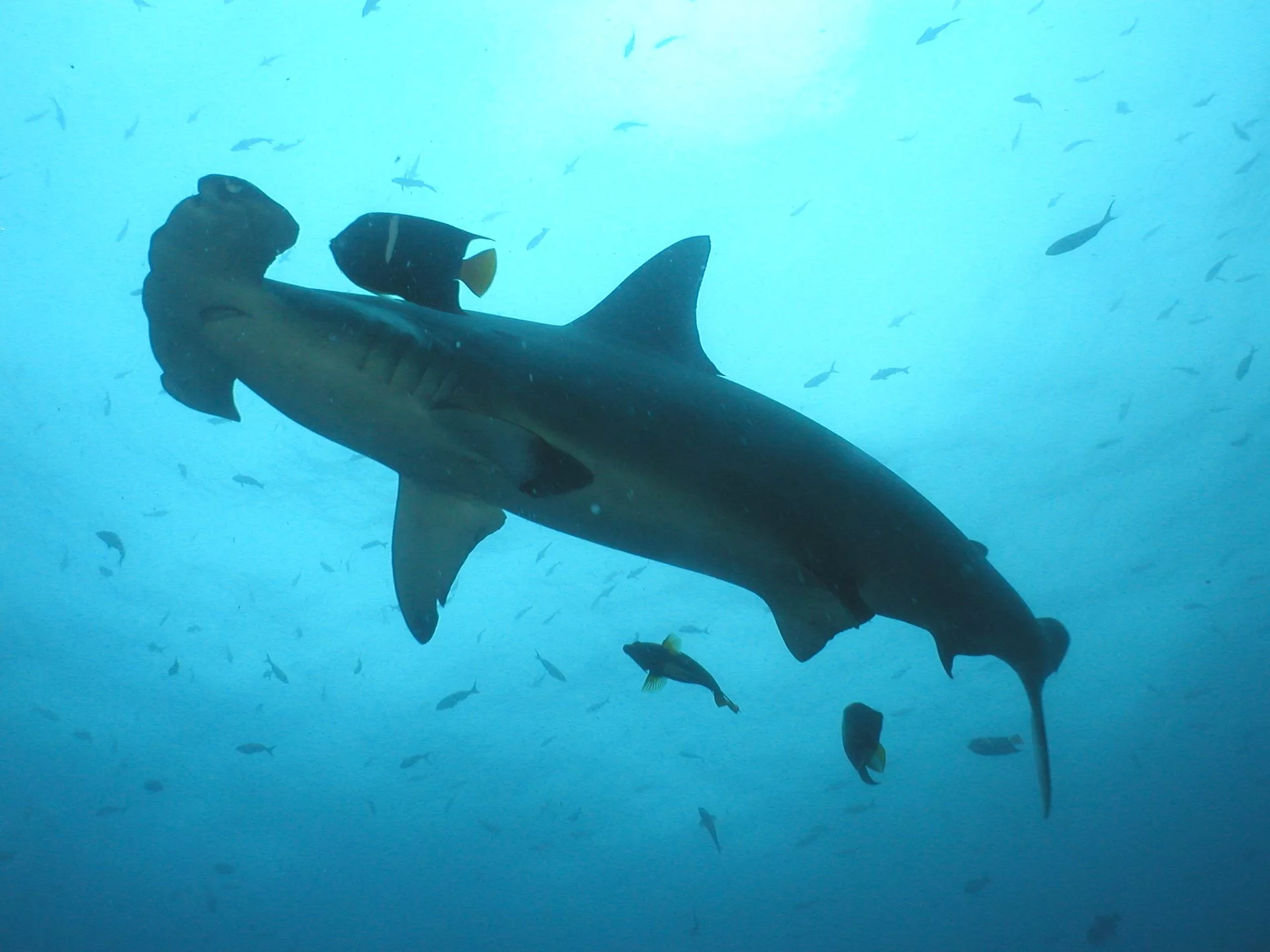
“Gordon Rocks is the cheap alternative day trip rather than liveaboards in the Galapagos Islands,” says Tom Paris. “I dived it a couple of times when I was there. Two towers are poking out of the water, but in between and underneath them in the water are three more pinnacles. In the middle is a flat, sheltered underwater cove, but the best thing to do is to drop to about 15 meters (50 feet) and hold on to a rock as there are strong surge currents. If you’re lucky, you’ll see schools of 50-60 scalloped hammerheads swimming back and forth through the underwater pinnacles. Magic!”
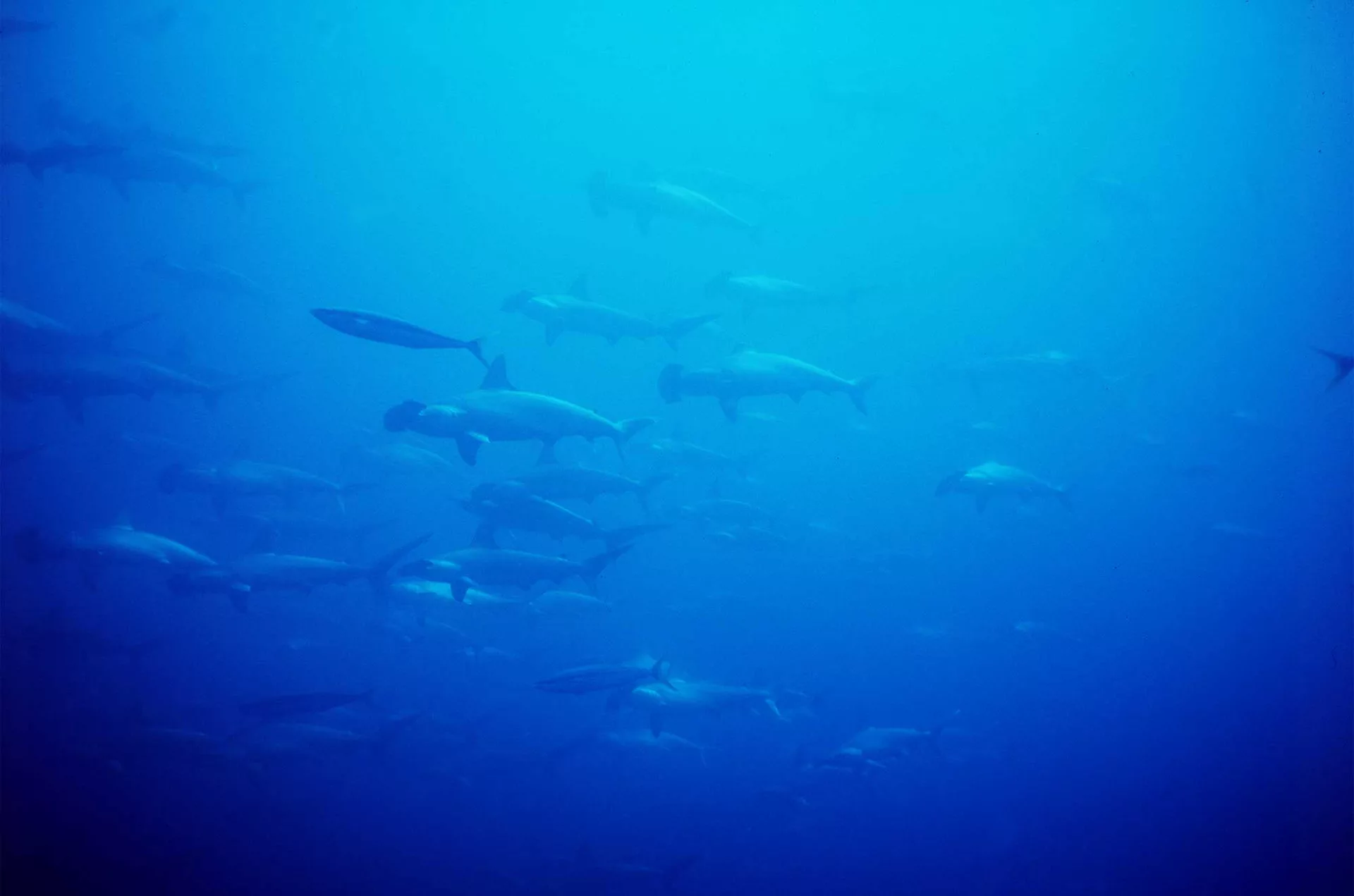
Gordon Rocks is a 30-minute journey from the Itabaca Channel and is suitable for intermediate or advanced divers due to strong currents. Divers can expect close encounters with schools of hammerhead sharks, black tip sharks, white tip reef sharks, green sea turtles, barracuda, spotted eagle rays and mobula rays amidst an array of reef fish.
5. Egypt – Red Sea
Egypt’s Red Sea reefs overflow with life, presenting a spectacle of vibrant corals and swarming fish that form a living kaleidoscope. These reefs are a haven for divers of all levels, boasting calm, clear conditions and a diversity of underwater experiences, including wreck, wall, and drift dives, as well as shore dives and day boat trips. Technical divers and instructors are drawn to Egypt’s Red Sea due to its excellent visibility and easy access to deep-sea exploration. The flexibility to split your holiday across different locations lets you taste a variety of dive sites and cultural experiences.
“Jackson Reef in the Straits of Tiran is an exceptional dive site in the Red Sea, offering an exhilarating underwater experience. Its underwater landscape combines walls and amazing coral gardens with various healthy corals and thriving fish populations. Hawksbill turtles have chosen this vibrant underwater haven as their favorite dining destination, where they delicately feast on the lush soft corals, contributing to the reef’s unique and thriving ecosystem. The abundance of fish here is so mesmerizing that the reef can sometimes appear almost hidden beneath a shimmering sea of marine life. It’s a breathtaking spectacle that leaves divers in awe of the Red Sea’s underwater magic,” says Yuliya Honcharska, PADI Travel Expert.
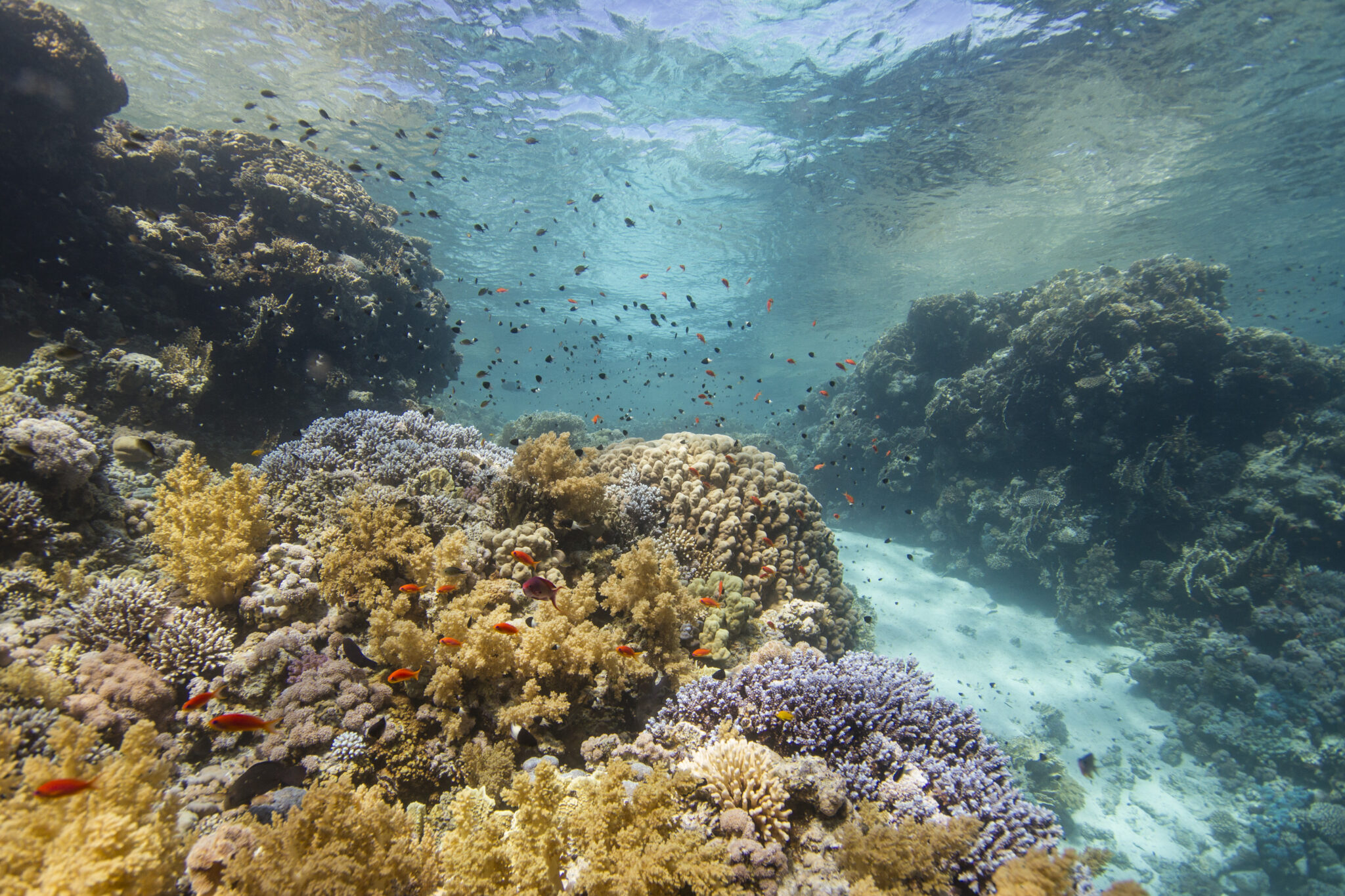
Diving in Egypt is possible year-round, with water temperatures ranging from 21 to 28°C (70 – 82 °F) and visibility extending from 20 to 50 meters (66 to 164 feet). For divers with a keen interest in hammerhead sharks, the best time to visit is between June and September, when the water is warmest. Though less predictable, whale sharks are more likely to be spotted between May and August.
6. Hawaii – Kona
Hawaii, a scuba diver’s paradise, is renowned for its volcanic origins and unique geographic isolation, resulting in many diving experiences that are second to none. The island’s underwater universe teems with Galapagos sharks, nesting sea turtles, tiger sharks and majestic manta rays, all set against the fascinating landscape of natural lava tubes and rock formations. Notably, the marine life in Hawaii is well-protected, ensuring a constant bounty of aquatic life. Uniquely endemic species, seen nowhere else in the world, add another layer of intrigue to the Hawaiian underwater adventure.
Kelly Hicks, PADI Travel’s Operation Manager, shares her love for Hawaii – her home base and one of her favorite dive destinations. “Hawaii has my heart,” she says, “with its unique diving experiences and diverse species found only in the islands. But there’s more to enjoy beyond diving, from exploring active volcanoes to hiking lush valleys.”
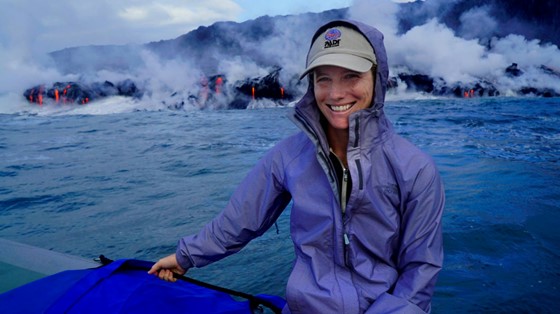
“One of the most famous dives in Hawaii is the Manta Ray Night Dive in Kona. My first experience of this night dive was truly unforgettable. As we descended into the water, we were met with an incredible sight – an unusually high number of manta rays gracefully swimming overhead. It felt like we were witnessing a remarkable natural phenomenon, yet this occurs regularly as the mantas feed on the accumulated plankton in the area. The manta rays, illuminated by our underwater lights, glided effortlessly through the water, showcasing their distinct markings and gentle demeanor. It was a moment of sheer wonder and a powerful reminder of the importance of protecting our oceans. That night dive in Kona will stay with me as a testament to the beauty and mystery of the underwater world,” adds Kelly.
Divers can enjoy the balmy waters of Hawaii year-round, with average temperatures changing between 75-80°F (24-27°C), peaking in September. Between December and March, the waters become a stage for the magnificent Humpback whales, offering whale watchers a grand spectacle as they breed and give birth.
7. Indonesia – Raja Ampat
Shifting our focus to the eastern region of Indonesia, we find Raja Ampat, or the “Four Kings,” a breathtaking archipelago comprised of hundreds of islands, four of which are significant: Misool, Batanta, Waigeo, and Salawati. Its remote location fosters some of Indonesia’s most unspoiled reefs and stunning vistas. Divers are treated to an extraordinary banquet of marine life, from large schools of fish, manta rays and reef sharks to smaller critters, like pygmy sea horses and nudibranchs. Raja Ampat shines in its diversity and abundance. The region also hosts unique species, like wobbegong sharks and walking sharks. Because it’s one of Earth’s most diverse destinations, you can also count on seeing many other marine species, including Spanish mackerel, tuna, barracuda, ghost pipefish, cuttlefish,and a vast array of crustaceans. For optimal diving conditions, plan your visit between October and April.
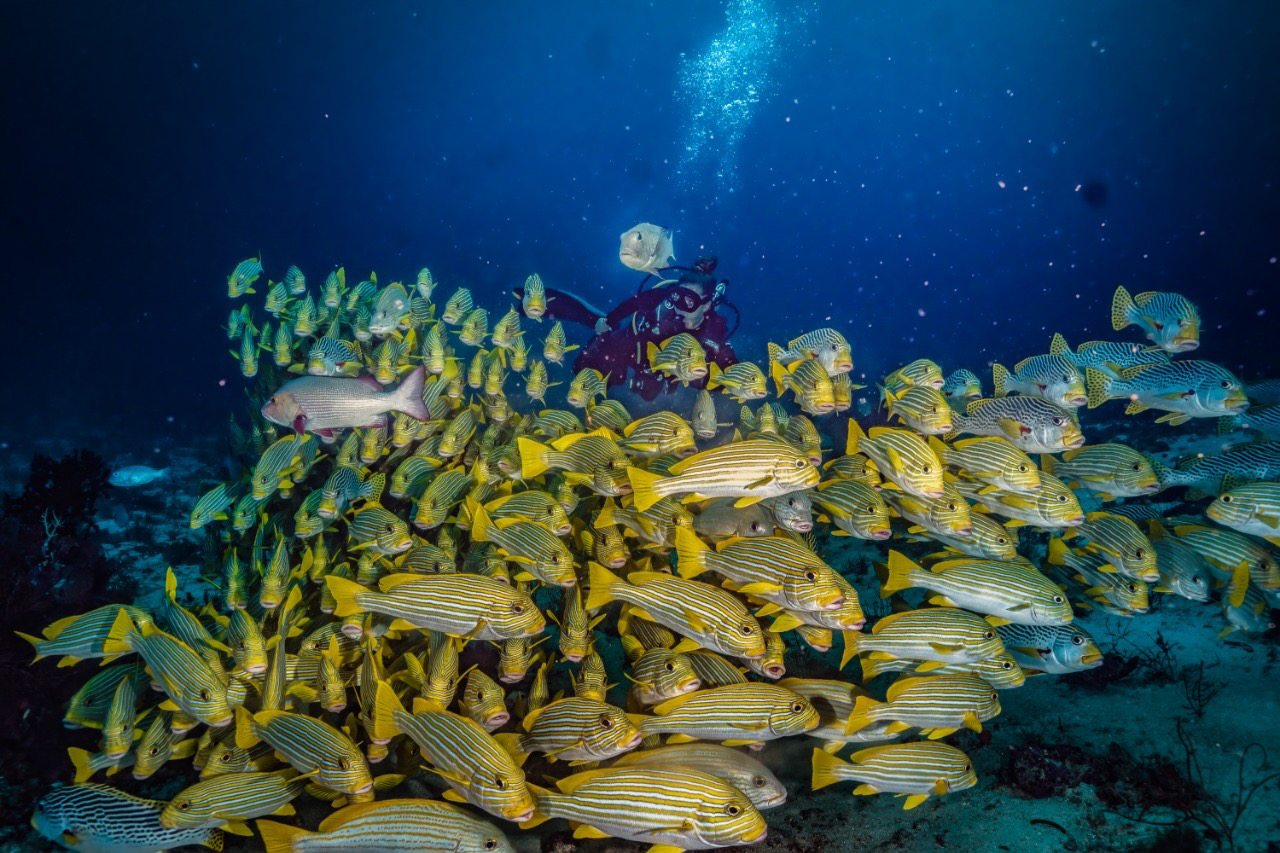
“Diving in Raja Ampat, Indonesia, provides a wonderland of biodiversity, making it one of my favorite destinations worldwide!” says Meg Whitehead, PADI Travel Sales Team Shift Lead. “This area reminds us of how reef diving should look and why we should strive to protect it. Raja Ampat serves as a poignant reminder of what our oceans can be. It is teeming with life at any depth with such a variety of species that it will make your head spin. From diving around Manta Rays and Wobbegong sharks to losing count of the number of nudibranchs in the coral gardens, life underwater never ceases to amaze!” Meg adds.
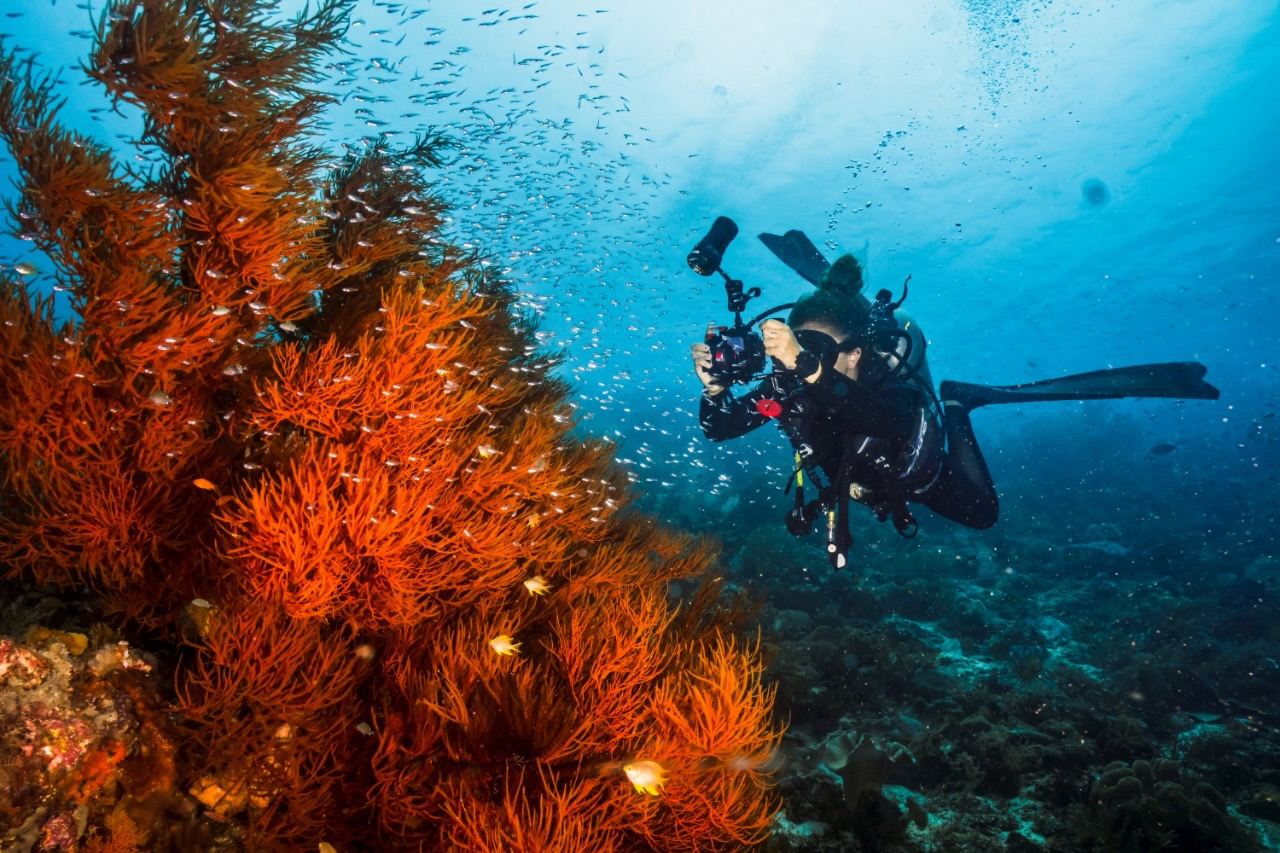
8. Maldives
The Maldives, a heavenly country known for its stunning white-sand beaches and extraordinary reefs, offers an unparalleled diving experience. Driven by the Indian monsoon current, divers drift leisurely, witnessing the rich marine life flourishing thanks to the nutritious flow of water. The atoll lagoons contain rock pinnacles, or ‘thila,’ that scrape the water’s surface from the depths. Divers can explore the channel’s swim-throughs, caverns, and overhangs adorned with vibrant sponges, invertebrates, and gorgonians. Witness the fascinating spectacle of manta rays serviced by wrasse and shrimp at cleaning stations combined with frequent sightings of sea turtles and whale sharks. Diving in the Maldives is accessible year-round due to its tropical climate and warm water temperatures, ranging from 80-86°F (26-30°C).
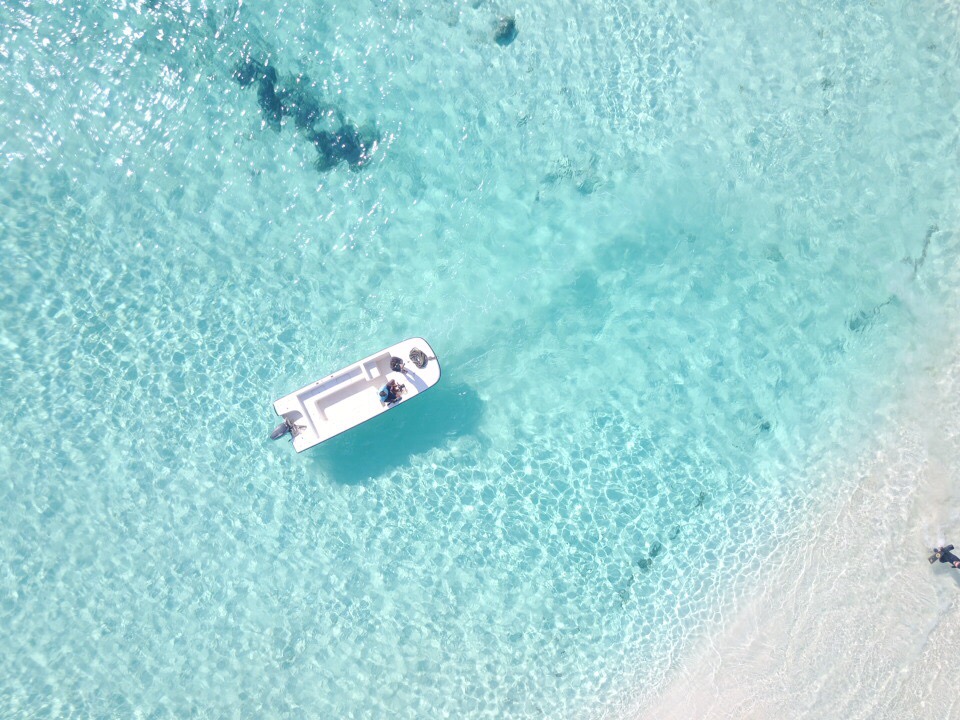
“I’ve called the Maldives home for fifteen years, and it’s always filled with wonder. You’ll have an amazing experience on these beautiful islands regardless of the month. The marine life here is active year-round due to the surrounding currents. Visit Manta Points and swim with whale sharks in the Ari Atoll anytime. However, Hanifaru Bay hosts the world’s largest gathering of manta rays from August to October. From January to April, the southern Maldives is a hotspot. Clear waters reveal hundreds of grey reef sharks in channel dives. Around Fuvahmulah Atoll, you might even spot oceanic mantas, hammerhead sharks, and tiger sharks. The Maldives is a diver’s paradise, offering fantastic dives and excellent service year-round. Whether you explore the north or the south, prepare for an incredible underwater experience,” remarks Giacomo Ganda, PADI Travel Expert.
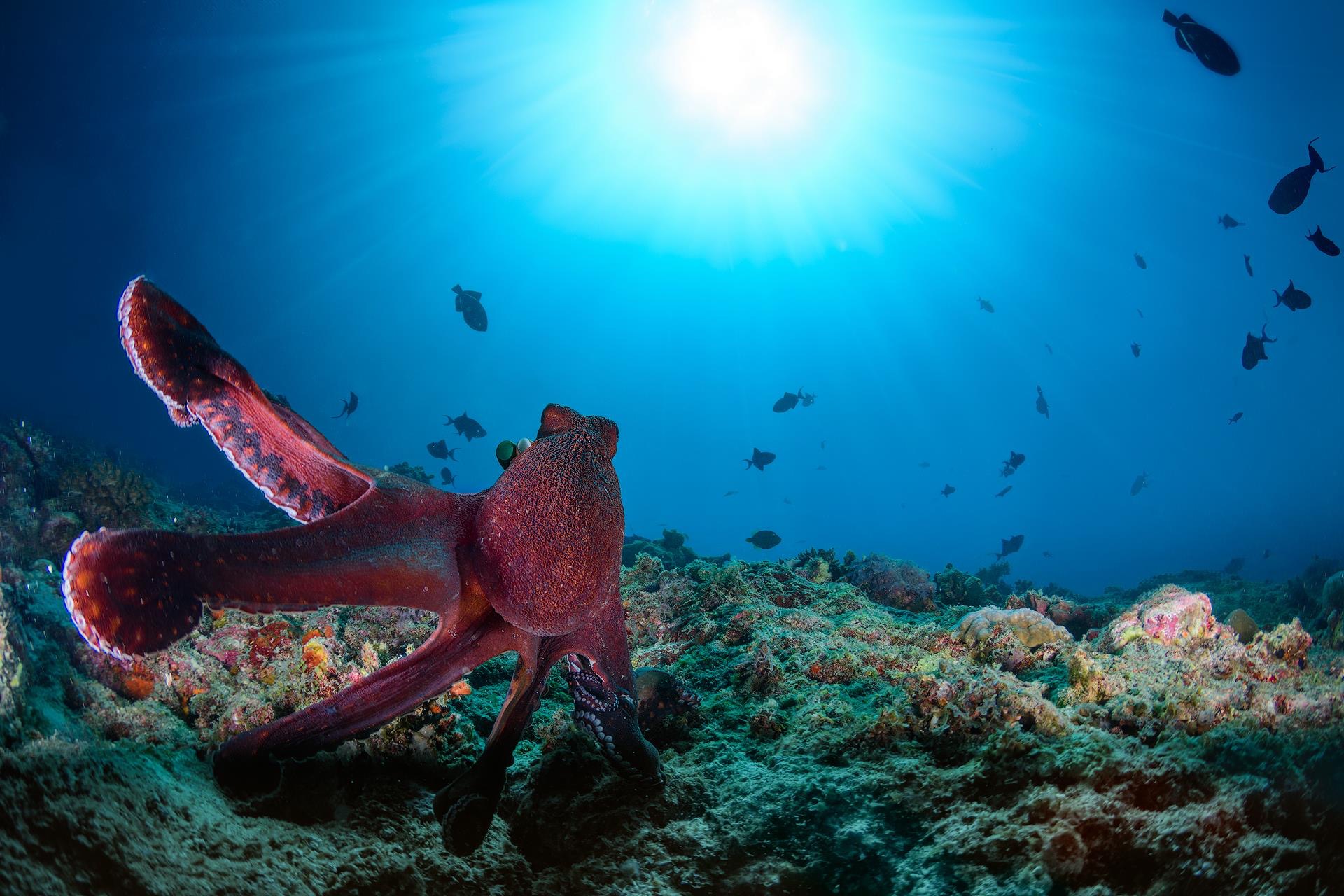
9. Mexico – Playa del Carmen
Diving sites in Playa del Carmen, Mexico showcase stunning caverns and healthy reef systems along sandy shores. It’s a sanctuary for diverse marine life, including massive sharks and small macro creatures. The most striking wildlife attraction, from November to March, is the presence of female bull sharks. Eagle rays, loggerheads, and green turtles also frequent the area. On rare occasions, sailfish and whale sharks can be spotted at sites further off the coast. Tropical species are plentiful in Playa del Carmen’s thriving reefs.
“One of my all-time favorite dive spots is at the Cueva del Pargo dive site, off Playa del Carmen’s coast. It’s like stepping into an aquatic wonderland,” says Mica Laboureau, PADI Travel Sales Team Shift Lead. “Here, as you explore the crystal clear waters, you’ll swim alongside seasonal sea turtles and spot seahorses, angelfish, and even barracuda. It’s not just a dive site; it’s a captivating journey into the heart of a thriving underwater ecosystem. This photo is from July 2023, but I would go back time and time again!“
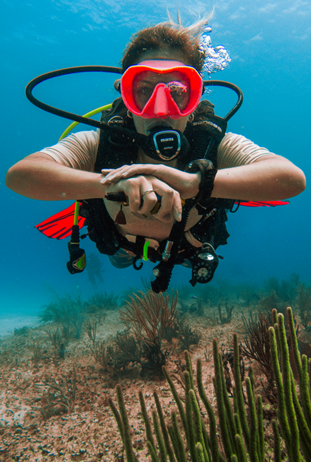
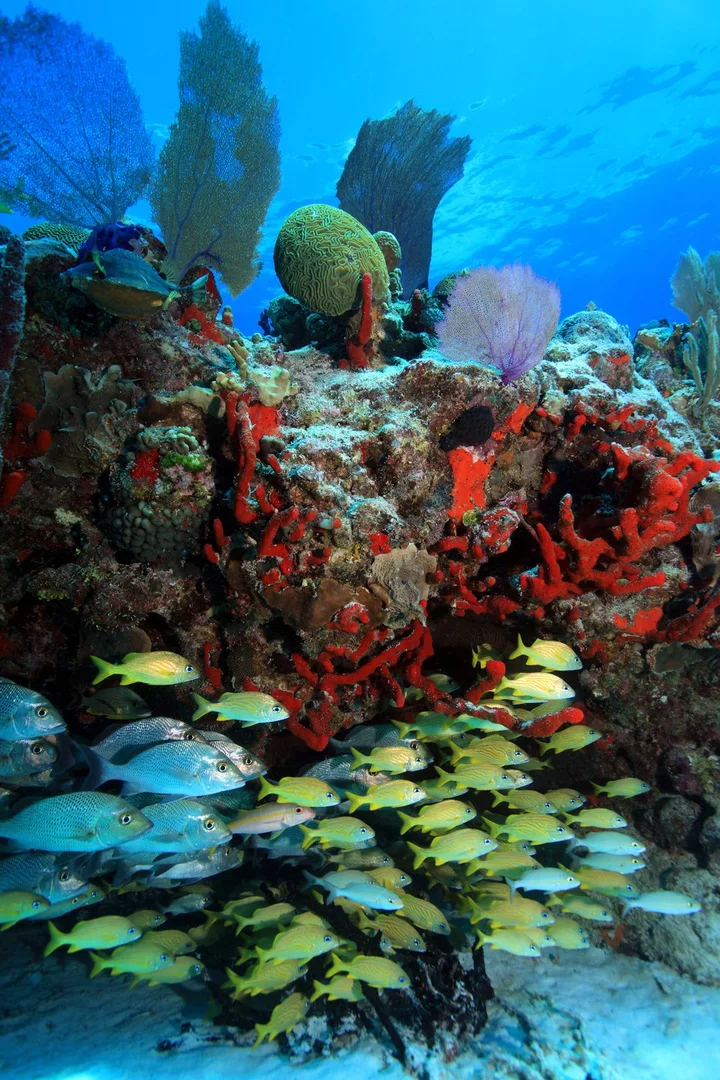
Diving here is excellent all year round, with water temperatures remaining consistent and cooling only slightly during winter. On average, water temperatures range between 77-83°F (25-28°C). From November to March, bull sharks are commonly found along the coast, and many other pelagic species are drawn to the area due to the slightly cooler temperatures in winter. Whale shark sightings near Isla Mujeres are best from June to September, should you want to take a day trip from Playa del Carmen. And from May to September, loggerhead and green turtles come ashore to lay their eggs along the Riviera Maya.
10. Philippines
The Philippines, with its thousands of enticing dive sites, offers an array of experiences suited to all levels of scuba divers. For beginners, the Luzon region near Manila is an ideal starting point, characterized by easy beach entries and a rich macro life that attracts thousands of divers annually seeking their initial scuba diving certification. History buffs are drawn to Subic Bay for its unique wreck diving opportunities, where sunken WWII warships, now inhabited by soft coral, turtles, numerous fish species, and sea snakes, provide an unforgettable underwater adventure. The marine life in the Philippines is impressive, featuring thresher sharks, whale sharks, schools of jacks, sardine balls and rays. Whether honing your diving skills or simply enjoying the diverse underwater life, the Philippines is the perfect blend of underwater exploration and laid-back vacation.
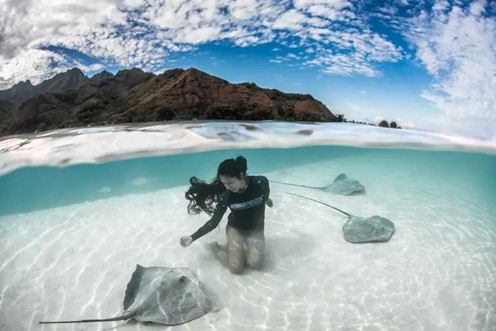
“I was just in awe at the explosion of life that was Tubbataha in the Philippines. It was like seeing the nursery of the Coral Triangle in full throttle! There are so many baby fish (sharks, triggers, jacks, surgeonfish, and more tiny reef fish galore) and schools mating everywhere! And let’s not forget about all of them doing their courting rituals and building nests. I was surprised at how good parents (and partners!) fish can be. I will never forget this experience, and I feel very privileged to have been able to nab a space on the Philippine Siren, considering the short season. An experience to remember and cherish. No wonder it is so sought-after!” remarks Hilda Armacanqui, PADI Travel Expert.
BONUS: Portugal – Azores
The Azores in Portugal offers a unique and abundant underwater world thanks to its varied seafloor topography. From tiny invertebrates to massive marine mammals and pelagic fish, it’s a diver’s paradise that caters to all experience levels. Divers can explore the islet of Vila Franca and its diverse dive spots, while the south coast boasts volcanic arches, canyons, and reefs.
“Diving in the Azores offers an extraordinary experience,” says Meg Whitehead. “With its crystal-clear waters and visibility exceeding 30 meters (100 feet), I was treated to a breathtaking display of marine life amidst unique geological formations. Having thermal vents around these volcanic islands creates a rare opportunity to explore ecosystems adapted to extreme conditions. Its unique location in the Atlantic also brings wonders, like manta rays, various shark species (including the rare blue shark), and over 12 species of whales! Moreover, the Azores’ commitment to marine conservation ensures encounters with vibrant and thriving ecosystems, making every dive a testament to the community’s dedication to preserving its natural treasures,” Meg adds.
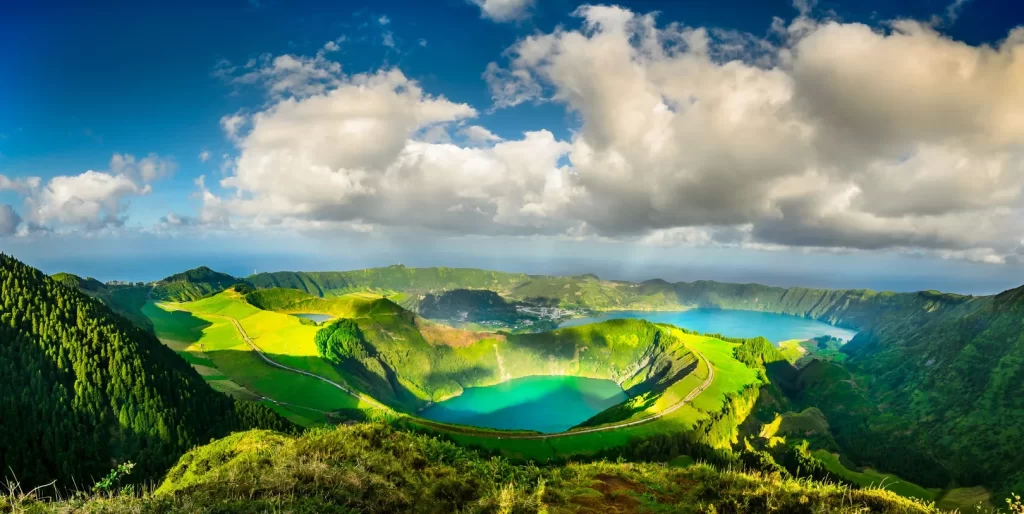
Diving in the Azores is seasonal; winter sees temperatures dipping to 58°F (14°C), whereas spring offers fantastic night diving experiences with sightings of tope sharks, squid, thornback rays and krill. The high season corresponds with the manta seasons on Pico, Faial, and Santa Maria islands from July to October. Visibility varies from 15ft to 120ft (5m to 40m) due to the upwellings and thermoclines, though offshore dives enjoy a more constant 105ft (35m) visibility, courtesy of the deep waters.
Whether you’re a seasoned diver or just starting, these top diving destinations offer unparalleled experiences that should not be missed. From vibrant marine life to unforgettable moments, each location provides a unique opportunity to explore the wonders of the underwater world. Choosing the perfect diving destination can be daunting. Still, we hope that the recommendations and insights from the PADI Travel Team, who have diving experience in over 60 countries, will assist you in deciding your next diving adventure. So grab your gear, dive in, and enjoy the incredible beauty that awaits! Happy diving!

